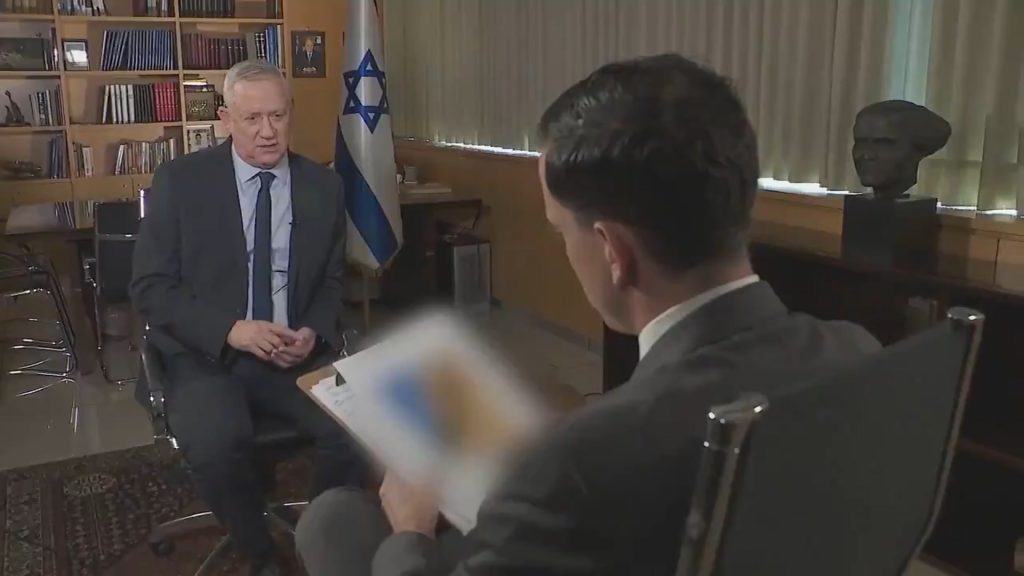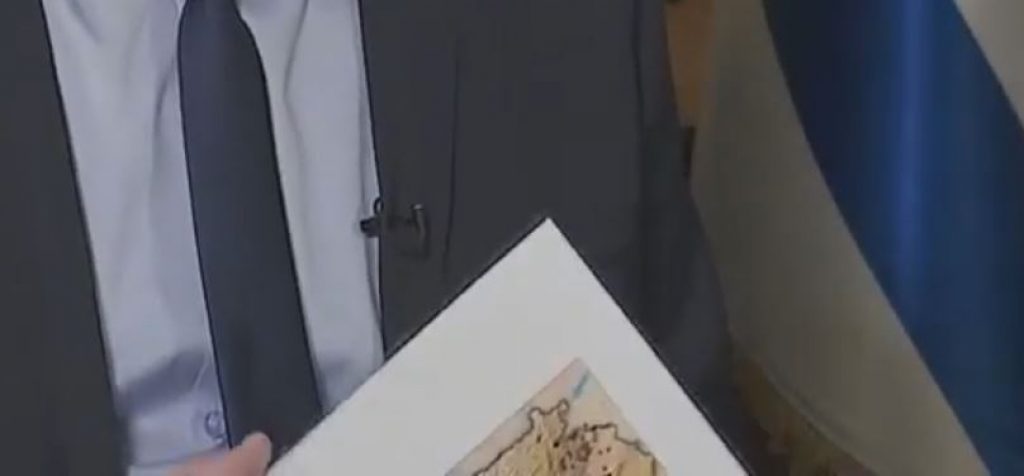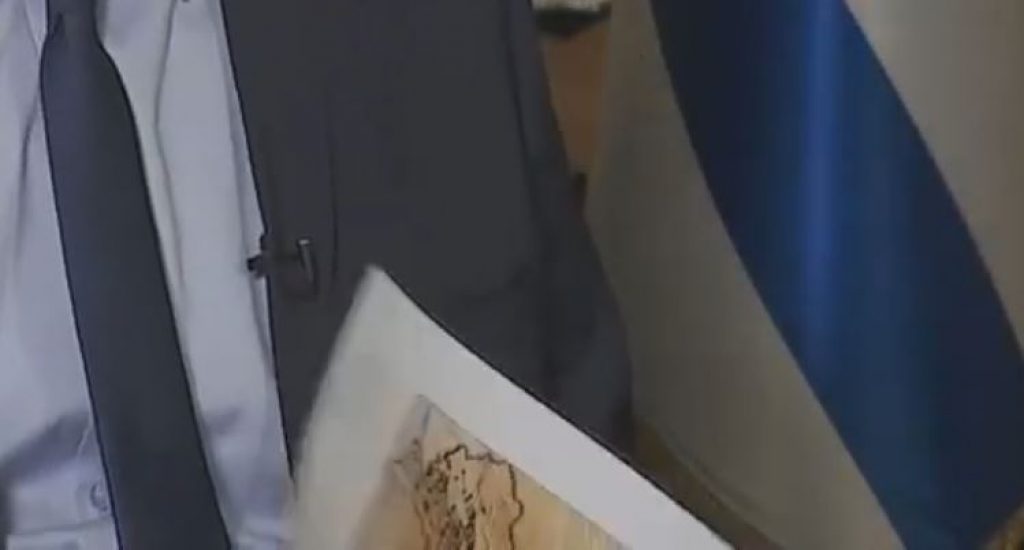
During a recent interview on Fox News, Israeli Defense Minister Benny Gantz conspicuously revealed some of Hezbollah military sites inside Lebanon as a message to the militant group.
Israeli officials revealing declassified material about Hezbollah to the public isn’t unprecedented, however, the manner in which it was revealed last week was somewhat peculiar.
In the interview, Gantz was asked about a range of topics including how many missiles Hezbollah had in its possession. Gantz replied ‘hundreds of thousands,’ and proceeded to show the interviewer a map of Lebanon that was digitally blurred by the Israeli Military Censor from the viewer. Gantz remarked the map showed the locations of Hezbollah ground forces, missiles, headquarters and launching sites.
Additionally, Gantz elaborated by saying ‘everything is aimed at civilian targets and everything is being conducted from civilian infrastructure.’
Initially, the digital blurring seemed to cover the entire map, but when Gantz handed it over to the interviewer, a small portion of northern Lebanon was not blurred. This was not an oversight by the Israeli Military Censor.
By analyzing frames of the interview, the unblurred image of the map shows northern Lebanon marked by black dots that are presumably locations of Hezbollah sites in northern Lebanon. The disclosure of sensitive locations was done to convey a message to Hezbollah that Israel was aware of the locations of its military infrastructure.
As FDD’s Long War Journal has extensively reported in recent months, Israel and Hezbollah have been engaged in an exchange of warnings of conflict if either side were to breach the status quo. [See FDD’s Long War Journal, Analysis: Hezbollah renews threats in publication, fails to make an impression.]
The disclosure of sensitive intelligence about Hezbollah military sites embedded within the civilian population of Lebanon is part of a strategy by Israel to publicize Hezbollah’s military efforts so if conflict were to break out, Israel would be justified in protecting itself from attacks if they emanated from populated locations.
In contrast, Hezbollah has responded by reciprocating warnings that IDF bases near civilian infrastructure are considered legitimate targets in a future conflict.
It is unlikely the Israeli Military Censor blundered by allowing sensitive military intelligence to be made public thus allowing some of the map to be shown — albeit briefly — knowing that Hezbollah monitors news about Israel and would notice the unblurred image in the interview.









